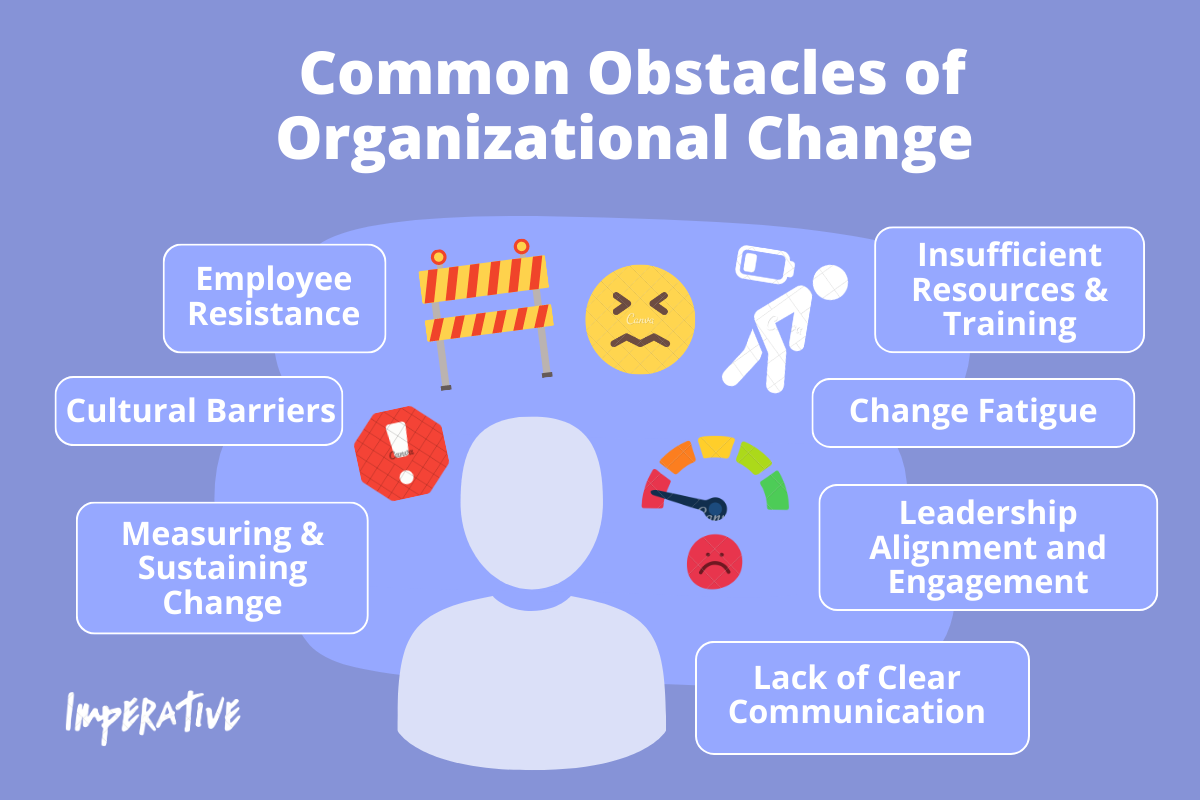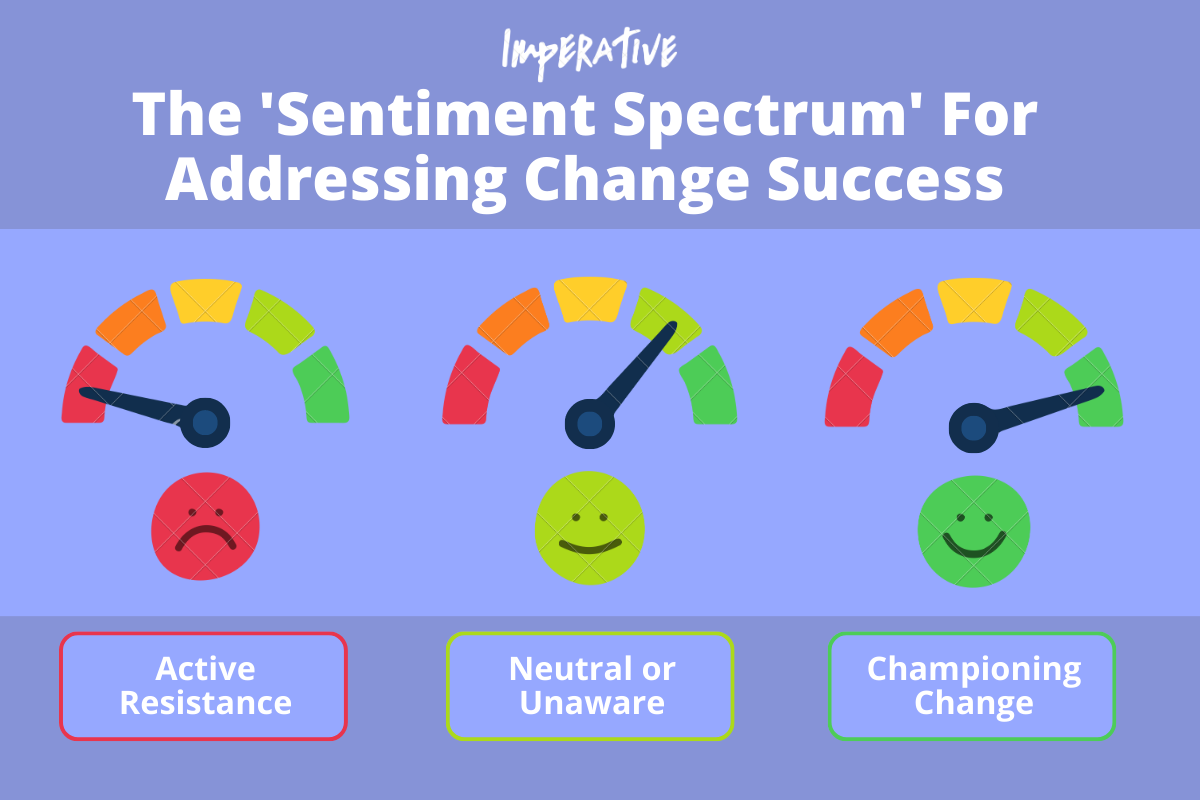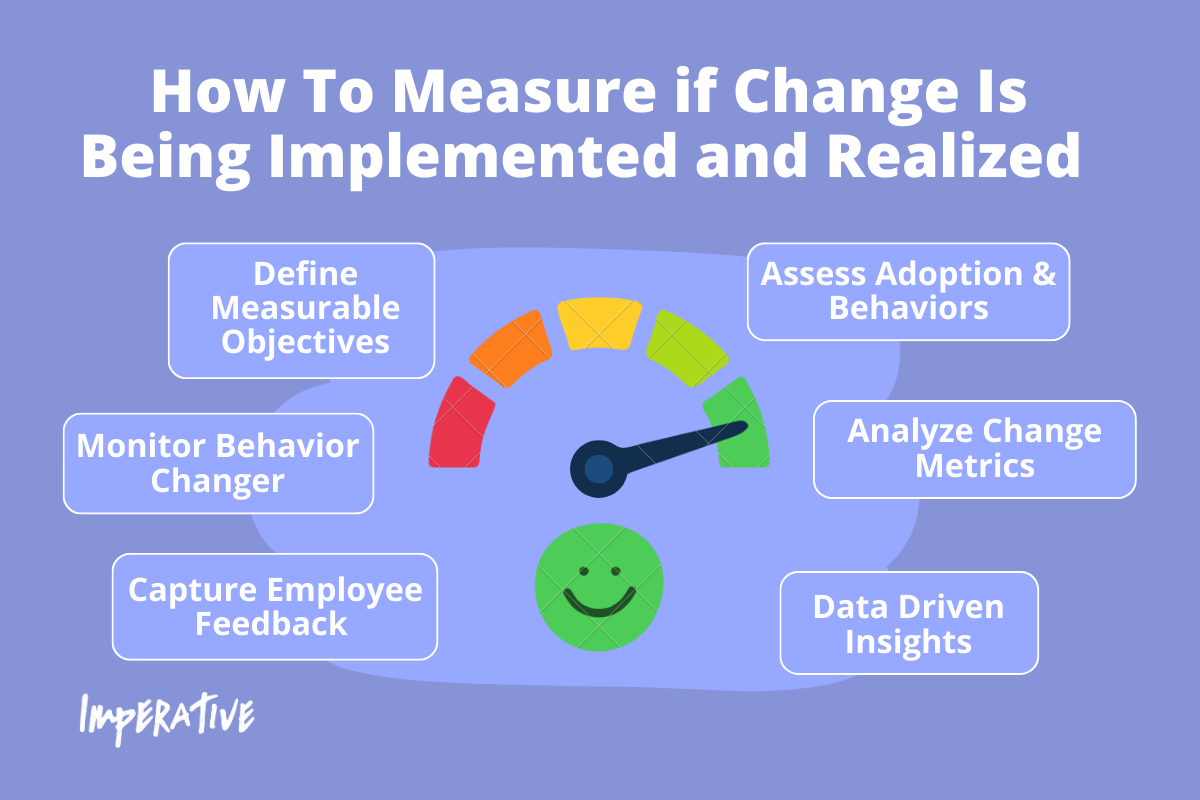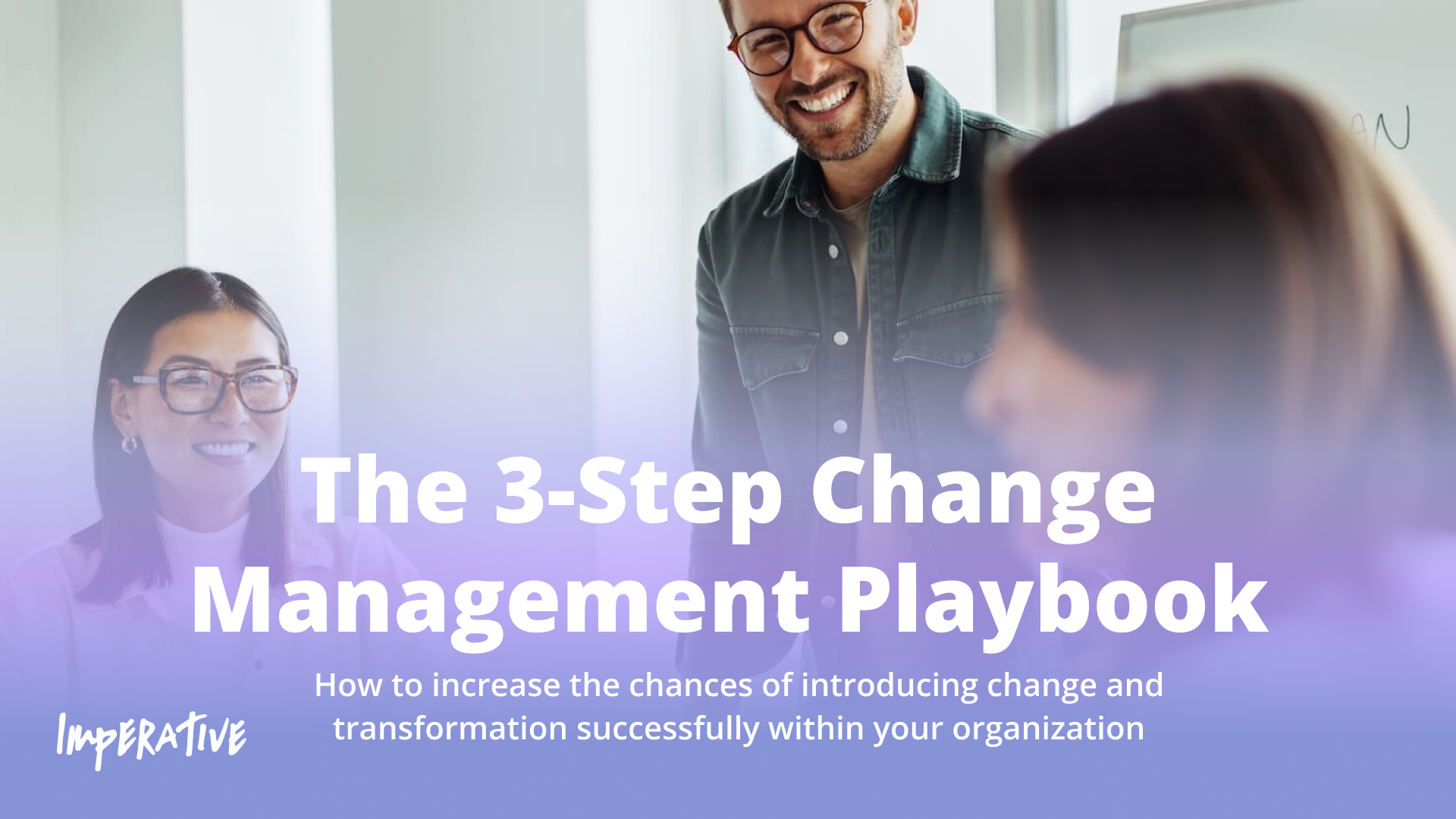Organizational Change
How to Overcome and Activate on the Challenges of Organizational Change
What This Article Covers:
Change is constant. In the ever-evolving landscape of modern work, change is a given. Organizations across every industry recognize the need to adapt to shifting market dynamics, emerging technologies, and evolving customer expectations.
The concept of “organizational change” has taken center stage as a response to these dynamics. However, the road to successful change implementation is full of challenges that can hinder progress and undermine the desired outcomes.
The Complex Terrain of Organizational Change: Unveiling the Challenges
Organizational change, while essential for growth and adaptation, presents a landscape riddled with challenges that can test even the most resilient of organizations. There is a problem, and change must occur. However, change initiatives must contend with a myriad of obstacles that can impede progress, hinder employee engagement, and even lead to failure if not managed effectively. Some of these common obstacles are:
- Employee resistance and uncertainty: Perhaps the most formidable challenge is the resistance and uncertainty that often accompanies change. Employees may fear the unknown, worry about their roles, or question the necessity of change, leading to hesitancy or even outright opposition.
- Lack of clear communication: Inadequate communication can cast a shadow over change efforts. If employees do not fully grasp the reasons, goals, and implications of change, misinformation and ambiguity can breed skepticism and confusion.
- Leadership alignment and engagement: For change to permeate an organization, leaders at all levels must be aligned and actively engaged. Without committed leadership, change can falter and lose momentum, leaving employees disoriented.
- Cultural barriers: Organizations that have deeply ingrained cultures may find it challenging to introduce change that contradicts established norms and values. Overcoming cultural resistance demands thoughtful strategies and an inclusive approach.
- Change fatigue: Frequent or poorly managed change can lead to change fatigue, where employees become overwhelmed and disenchanted with continuous upheaval, potentially affecting morale and performance.
- Insufficient resources and training: A lack of resources, including time, money, and training, can hinder successful change implementation. Inadequate preparation can lead to underwhelming results and frustrated employees.
- Measuring and sustaining change: Even after implementation, sustaining change poses its own set of challenges. Measuring the long-term impact and ensuring that new behaviors become ingrained can be intricate tasks.

It’s been proven that 70 percent of change programs fail to achieve their goals, mostly because of employee resistance and lack of management support. However, if people are truly invested in change, it is 30 percent more likely to be successfully implemented.
So what is the ultimate cost of a failed change effort on an organization? It’s not just the loss of time and money, or implementation of the program, but it’s the larger organizational costs: Productivity decline, poor quality of work, employee attrition and disengagement, damaged reputation, poor customer service, and the normalizing of failed change.
What is The Foundation of Successful Change?
Navigating organizational change is a complex journey that hinges on understanding and managing employee sentiment. Employees’ reactions to change varies widely, and how you address the level they are at is key. In fact, using a comprehensive framework or ‘sentiment spectrum’ to address these nuances is often helpful to create successful transformation. This diverse range of employee sentiment has different levels of buy-in:
- Championing change: At one end of the spectrum are employees who enthusiastically embrace the change and become advocates for its success. These individuals can play a pivotal role in inspiring and influencing their colleagues. Organizations need to identify these change champions and provide avenues to amplify their voices, encouraging peer-to-peer engagement and mentorship.
- Neutral or unaware: Many employees may fall into the neutral or unaware category, unsure about the change’s implications or significance. Education and communication to this group is a must. Through personalized conversations and shared experiences, employees gain a clearer understanding of the change’s purpose and benefits.
- Active resistance: Resistance to change is natural and can stem from fear, uncertainty, or misunderstanding. Resistance should be met head-on. By fostering a culture of open dialogue, change leaders can identify pockets of resistance and tailor interventions to address specific concerns. This proactive approach mitigates potential roadblocks and helps shift resistant employees toward acceptance.

How To Introduce Change in Your Organization in a Way That Sticks with Your Employees
Introducing change and transformation within an organization is a delicate and intricate process. For change to be successful and lasting, employees must be informed about the shift and deeply understand its purpose, relevance to their daily work, and the tangible implications it brings.
Communicate the ‘Why’ Behind the Change: Building a Foundation of Purpose
The foundation of successful change lies in articulating a compelling and resonant “why” behind the initiative. Employees are more likely to embrace change when they understand the rationale driving it:
- Clarify the vision: Develop a clear and concise narrative that explains the reasons behind the change. Highlight how the change aligns with the organization’s vision, goals, and long-term strategy. Employees develop a sense of purpose and direction by illustrating the larger picture and explaining how the change aligns with the organization’s mission.
- Highlight benefits: It’s essential to demonstrate how the change will positively impact the organization and individual employees. Illustrate how the change directly impacts employees’ roles and the organization’s success. When employees understand their contributions to the bigger picture, they are more likely to engage with enthusiasm.
Connect Change to Day-to-Day Work: Bridging the Gap to Practicality
Ensure that change becomes embedded in the fabric of an organization. In order for this to occur, employees need to recognize how it directly affects their daily tasks and responsibilities:
- Translate to tangible outcomes: Provide concrete examples of how the change will affect day-to-day tasks, processes, and workflows. Make the change relatable by describing real scenarios and showcasing the positive outcomes.
- Provide context: Create open forums where employees can openly discuss their thoughts, concerns, and questions about the change. Encourage a two-way dialogue that allows employees to share insights and ideas for smoother implementation.
Process, Discuss, and Ideate the Actual Implications: Fostering Collaborative Exploration
Change should not be a one-sided proclamation but rather a collaborative endeavor. Involve employees in the change process by allowing them to process, discuss, and ideate the implications of the change:
- Facilitate guided conversations: Organize facilitated conversations or workshops where employees can explore the change in-depth. Encourage them to share their perspectives, brainstorm solutions, and collectively address potential challenges.
- Brainstorm solutions: Through facilitated discussions, employees can collectively brainstorm potential solutions to challenges and hurdles the change poses. This collaborative problem-solving approach promotes a culture of innovation and adaptability.
By incorporating these strategies, an organization can lay a strong foundation for change that resonates with employees and increases the likelihood of successful adoption. Sustainable change is not just about implementation; it’s about creating an environment where employees feel empowered, engaged, and motivated to embrace the business transformation.
How To Measure if Change Is Being Implemented and Realized
Then you need to ask: What is success? Measuring the successful implementation and realization of change initiatives is a critical aspect of effective organizational change management. To gauge the progress and impact of change within an organization, considers the following:
Defining Measurable Objectives: Setting the Stage for Assessment
Before embarking on a change initiative, it is important to define specific and measurable objectives that align with the desired outcomes of the change:
- Identify metrics: Determine the metrics that will best reflect the success of the change. These could include factors such as increased productivity, improved customer satisfaction, or reduced operational costs.
- Establish baselines: Collect data on the current state of relevant metrics before implementing the change. These baseline measurements provide a basis for comparison and help assess the change’s impact.
Monitor Behavioral Change: Assessing Adoption and Behaviors
Tracking changes in employee behavior provides valuable insights into how well a team is adopting and integrating the change:
- Observational analysis: Observe and document changes in employee behavior, such as the adoption of new processes, tools, or collaboration practices. Compare these behavioral shifts to the pre-change state to assess progress.
- Collect quantitative data: Use surveys, questionnaires, or data analytics to gather quantitative data on changes in behavior and practices. Analyze this data to identify trends, patterns, and areas for improvement.
Employee Feedback and Engagement: Capturing Insights
Gathering feedback from employees offers a qualitative perspective on how well the change is being implemented and realized:
- Conduct interviews: Conduct interviews to capture employees’ opinions, perceptions, and experiences related to the change. This feedback provides valuable insights into challenges, successes, and areas of improvement.
- Encourage open communication: Create a culture of open communication where employees feel comfortable sharing their thoughts and concerns. Regularly engage in discussions or focus groups to gather ongoing feedback.
Analyze Change Metrics: Data-driven Insights
Finally, analysis of the data collected from various sources to derive meaningful insights and make informed decisions:
- Compare results to objectives: Compare the data against the predefined objectives and KPIs to determine the extent to which the change has been realized. Identify areas of alignment and areas that require further attention.
- Identify trends and patterns: Look for trends, patterns, and correlations within the data that offer insights into the effectiveness of the change. These insights can guide adjustments and improvements to the strategy for change management.
By implementing strong measurement strategies, organizations gain a comprehensive understanding of how effectively change initiatives are being implemented and realized. This data-driven approach enables informed decision-making, continuous improvement, and the optimization of change efforts for lasting success.

What Does It All Mean?
The potential impact of even a small percentage improvement in change realization within a company can be substantial. Such advancements can lead to significant gains in efficiency, productivity, and overall organizational success. The cumulative effect of these improvements can create a ripple effect throughout the company’s processes, culture, and bottom line.
To facilitate this change realization, a solution to customize and amplify any organizational change efforts. Clear communication at all levels, engaging leadership, and involving employees in the change process will help foster a sense of ownership and commitment company wide. Implementing well-structured programs, providing resources for development, and leveraging technology can further streamline the transition. By creating a supportive environment that encourages open dialogue, acknowledges challenges, and rewards innovation, the way can be paved for improved change realization that has a lasting positive impact.
Imperative’s Unique Approach to Solving the Organizational Change Challenge
Organizational change is a complex and multifaceted endeavor and Imperative stands at the forefront of revolutionizing how these challenges are tackled. By harnessing the power of meaningful connections at scale, Imperative offers a distinct and highly effective approach to accelerate and amplify the success of organizational change efforts.
Change Leadership Activation: Empowering Managers for Success
Successful change hinges on solid and effective leadership. Imperative’s approach places a spotlight on change leaders, equipping them with the knowledge, tools, and support needed to guide their teams through the change journey:
- Community building for change leaders: Imperative creates dynamic communities of practice where change leaders, managers, and change agents come together to share insights, best practices, and lessons learned. These communities foster a sense of belonging, encourage collaboration, and provide a platform for managers to access guidance from experienced peers.
- Inspiring employee awareness and desire: Imperative recognizes that transformational projects are the most impactful when employees understand the “what” and the “why” behind them. By connecting employees across different functions and roles, Imperative helps foster a sense of shared purpose. Peer-to-peer interactions accelerate understanding, spark enthusiasm for new ways of working, and provide a space for employees to ask questions and seek clarification.
- Harnessing real-time feedback or data: Imperative’s real-time sentiment analysis delivers a game-changing advantage in change management. Change leadership teams gain access to valuable insights into employee sentiment, allowing them to identify pockets of resistance and areas of alignment. With this data, change leaders can refine their digital transformation strategies, constructively engage resistors, and make informed decisions that drive positive change outcomes.
Unveiling What Makes Imperative Unique
For Businesses: Increase Change Acceptance, Activation, and Economic Value
Imperative’s unique approach translates directly into increased change acceptance and activation. By leveraging the power of connection and engagement, organizations experience heightened success rates in change initiatives. This trend leads to greater economic value as change efforts drive improved efficiency, innovation, and overall organizational performance.
For Employees: Navigating Change with Confidence and Success
Imperative empowers employees to navigate change with confidence. Employees tap into a wealth of collective knowledge and experience through cross-company networks. This network becomes a source of guidance, helping individuals comprehend the “why” behind the change, understand their role in it, and successfully transition to the “new normal.”
Why Imperative Excels Over Alternatives
By incorporating real-time sentiment analysis and dynamic conversations, Imperative’s solution outshines conventional approaches to change management:
- Real-time change sentiment: Unlike conventional methods that rely on static data, Imperative’s real-time sentiment analysis provides an up-to-the-minute pulse on how employees respond to the change. Change leaders can detect shifts in sentiment quickly and respond proactively to challenges or resistance.
- Dynamic conversations: Imperative’s customizable conversation engine enables tailored and dynamic interactions. This ensures that employees receive relevant guidance, support, and insights throughout the change journey, fostering a sense of personalization and relevance that traditional solutions often lack.
Embrace Change with Imperative
Organizational change is inevitable, but successful implementation is not. Imperative’s innovative platform harnesses the power of meaningful connections to drive change acceptance, activation, and economic value. With flexible conversations, real-time feedback, and a comprehensive framework, Imperative empowers organizations and employees to thrive in an ever-evolving work landscape. Embrace change with Imperative and unlock the potential of your organization’s transformational journey.

